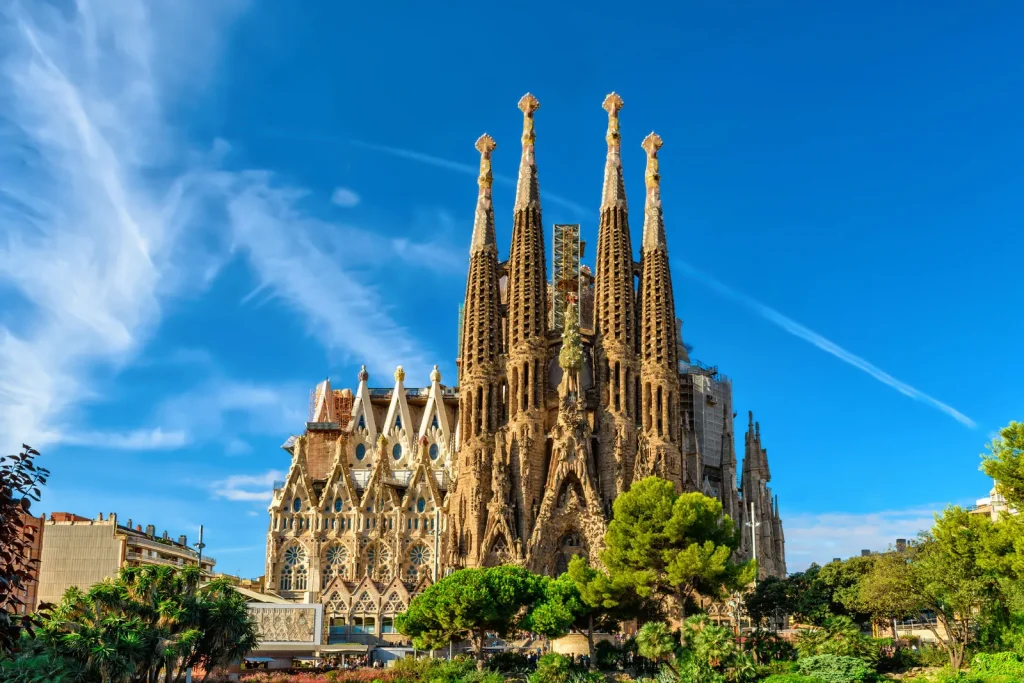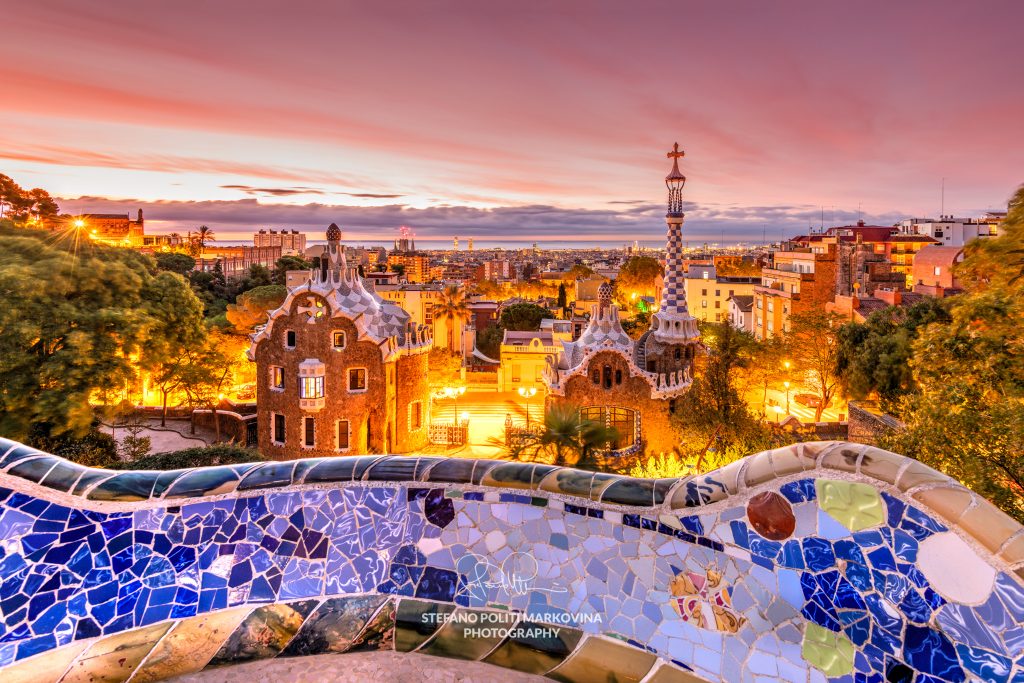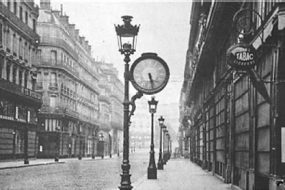Antoni Gaudí, the visionary architect from Catalonia, Spain, is a name that resonates with anyone who appreciates art, architecture, or the beauty of creativity. Born in 1852 in Reus, a small town near Tarragona, Gaudí’s work has become synonymous with Barcelona, where most of his masterpieces stand tall, captivating millions of visitors each year. His unique style, a blend of Neo-Gothic and Art Nouveau, infused with organic forms and an almost surreal imagination, has left an indelible mark on the world of architecture. Let’s explore some of his most iconic works and understand why Gaudí is celebrated as one of the greatest architects of all time.
The Sagrada Família: A Symphony in Stone
No discussion about Antoni Gaudí is complete without mentioning the Sagrada Família. This basilica, which has been under construction since 1882, is perhaps Gaudí’s most famous and ambitious project. Gaudí took over the project in 1883, transforming it into a reflection of his devout faith and his belief in nature as a source of inspiration. The Sagrada Família is unlike any other church in the world. Its towering spires, intricate facades, and stunning interior, which resembles a forest with columns like tree trunks, all showcase Gaudí’s unparalleled creativity.

What makes the Sagrada Família truly remarkable is Gaudí’s attention to detail and symbolism. Every element of the basilica has a deeper meaning, often rooted in Christian symbolism. For instance, the Nativity façade is dedicated to the birth of Christ and is adorned with intricate carvings of animals, plants, and other natural elements. The interior, bathed in colorful light streaming through stained glass windows, is a visual representation of Gaudí’s belief in the divine harmony of nature.
Though Gaudí died in 1926, the Sagrada Família continues to be constructed according to his plans, with an anticipated completion date set for 2026, marking the centenary of his death. Even in its unfinished state, it remains one of the most visited monuments in the world, a testament to Gaudí’s enduring legacy.
Park Güell: A Playground of Imagination
Another one of Gaudí’s masterpieces, Park Güell, is a UNESCO World Heritage site and a must-visit for anyone traveling to Barcelona. Originally intended as a housing development, the project was never fully realized, but what remains is a fantastical public park that showcases Gaudí’s genius.
The park is a vibrant mosaic of color and form, with elements that seem to spring from the earth itself. One of the most famous features is the serpentine bench that snakes around the main terrace, offering panoramic views of the city. The bench, covered in broken ceramic tiles, is a perfect example of trencadís, a technique Gaudí popularized, where tiles are broken and pieced together to create intricate patterns.

At the entrance of the park, visitors are greeted by a giant mosaic lizard, often referred to as “El Drac” or “The Dragon.” This whimsical creature is a symbol of Gaudí’s playful side and his deep connection to Catalan folklore. The park is filled with other fascinating structures, such as the colonnaded pathway resembling a wave, which once again demonstrates Gaudí’s ability to blend architecture with the natural landscape seamlessly.
Casa Batlló and Casa Milà: Architectural Fantasies
In addition to his public works, Gaudí also left his mark on residential architecture, with Casa Batlló and Casa Milà (also known as La Pedrera) being two of his most celebrated buildings.
Casa Batlló, often called the “House of Bones,” is a renovated building in the heart of Barcelona that Gaudí transformed into a visual feast. The building’s façade, with its undulating balconies and colorful mosaic tiles, is a marvel of modernist architecture. The rooftop, with its chimneys resembling the spines of mythical creatures, adds to the building’s otherworldly feel.

Casa Milà, another of Gaudí’s residential masterpieces, is famous for its undulating stone façade and wrought-iron balconies. The rooftop terrace is a particular highlight, featuring chimney stacks that look like surreal sculptures. Gaudí’s innovative design not only made the building aesthetically unique but also functional, with natural ventilation and light being key elements of its construction.
Gaudí’s Enduring Legacy
Antoni Gaudí was more than just an architect; he was a visionary who saw the world through a different lens. His work continues to inspire architects, artists, and anyone who values creativity. Gaudí’s ability to blend nature, religion, and imagination into his designs has made his work timeless. Today, his buildings are not just monuments; they are living, breathing pieces of art that invite us to see the world differently. Whether you’re exploring the Sagrada Família, wandering through Park Güell, or marveling at the façades of Casa Batlló and Casa Milà, you are stepping into a world where architecture and art come together in perfect harmony. Gaudí’s legacy is not just in the buildings he left behind but in the way he forever changed the landscape of modern architecture.













